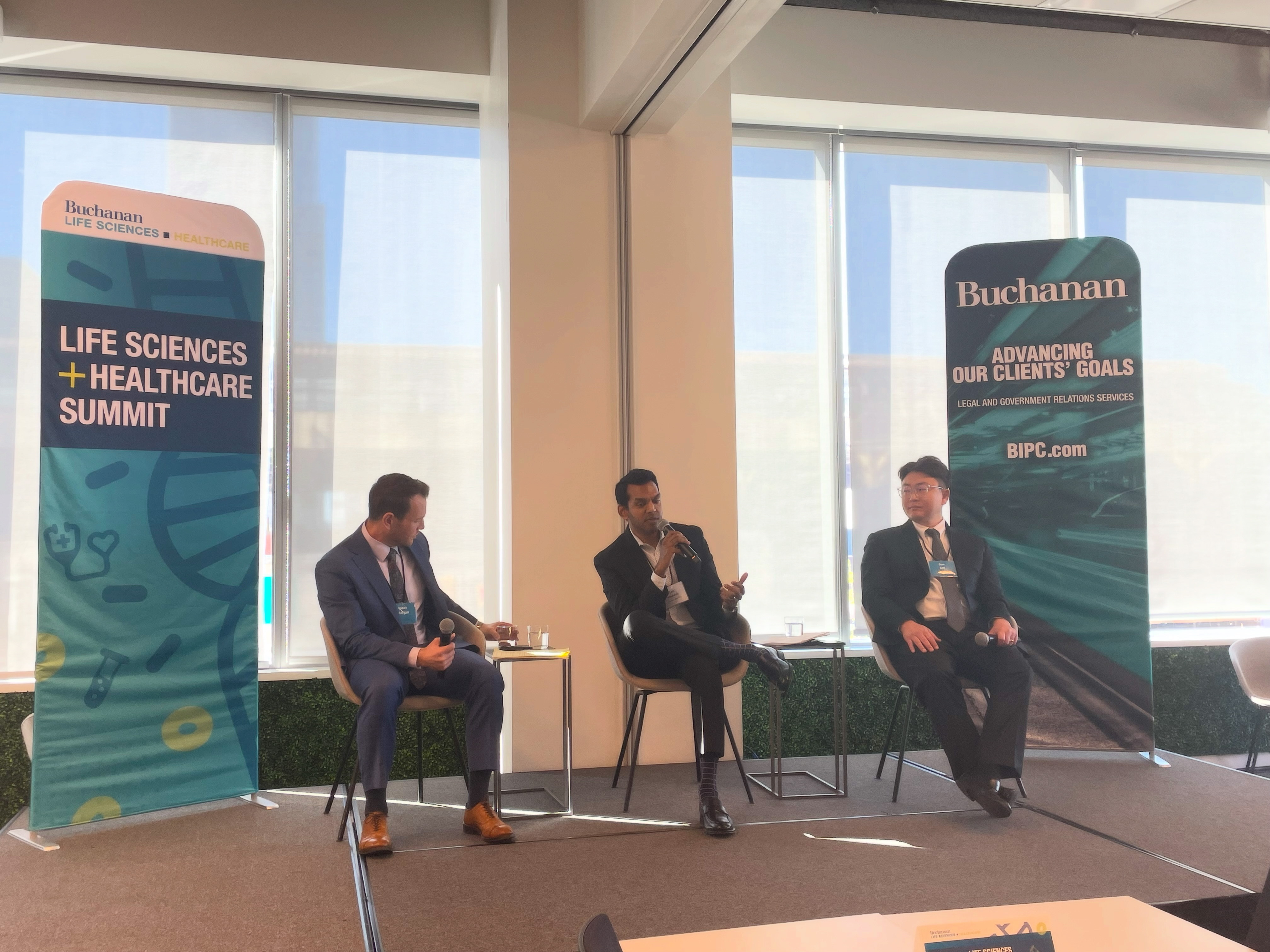
At the Life Sciences + Healthcare Summit hosted by Buchanan Ingersoll & Rooney during CYTO PHL, industry leaders gathered to examine one of the most consequential forces shaping healthcare today: the expanding role of Pharmacy Benefit Managers (PBMs).
In a panel discussion titled “The PBM Effect: Regulatory and Market Implications for Life Science Companies and Healthcare Providers,” I joined Dae Y. Lee, Pharm.D., Esq., CPBS and Lucas W. Morgan to explore how PBMs are transforming both the regulatory landscape and market operations of life sciences organizations.
Once viewed primarily as intermediaries managing prescription benefits, PBMs now hold significant influence over drug pricing, formulary access, and reimbursement structures. Their decisions directly affect how new therapies enter the market and how providers and patients interact with those innovations.
For life science companies, PBMs shape the path between laboratory and patient—impacting profitability, contracting models, and compliance demands. For healthcare providers, PBM-driven reimbursement mechanisms often dictate prescribing flexibility, patient affordability, and operational stability.
The result is a dynamic environment where strategy must evolve as fast as regulation.
Regulators at both state and federal levels have begun intensifying their focus on PBM transparency and rebate reform. These shifts are forcing pharmaceutical manufacturers and healthcare organizations to rethink how they track, report, and justify pricing decisions.
Rather than treating this as a compliance burden, forward-looking leaders view it as an opportunity to establish accountability, efficiency, and trust across their operations. The organizations that will thrive are those that build integrated systems—where legal, financial, and operational functions collaborate to anticipate change instead of reacting to it.
At Workshop Strategy, we help life science executives design growth structures that balance innovation with compliance. By aligning business intelligence, regulatory foresight, and operational readiness, companies can adapt to this new PBM-driven market without losing momentum.
As discussed on the panel, the complexity of PBM influence requires cross-functional collaboration. Pharmaceutical manufacturers, PBMs, healthcare providers, and policymakers must work together to define a fair, transparent value chain that benefits all stakeholders—especially patients.
Lucas Morgan underscored the importance of aligning contracting and operational frameworks with regulatory expectations, while Dae Lee highlighted how legal strategy and advocacy protect innovation from unintended policy risks.
These perspectives converge on a single truth: sustainable progress in life sciences demands strategic alignment between regulation, reimbursement, and execution.
The PBM effect is not a passing market trend—it’s a long-term structural shift redefining how healthcare operates. As regulation evolves, life science and healthcare leaders will need to blend policy literacy with business agility to stay competitive.
At Workshop Strategy, our mission is to help these leaders navigate complexity with clarity—transforming regulatory pressure into strategic advantage and ensuring innovation reaches the patients who need it most.
"There is no rulebook. There’s only experience"
Sam Maddula, Pharm D.
CEO & Founder, Workshop Strategy